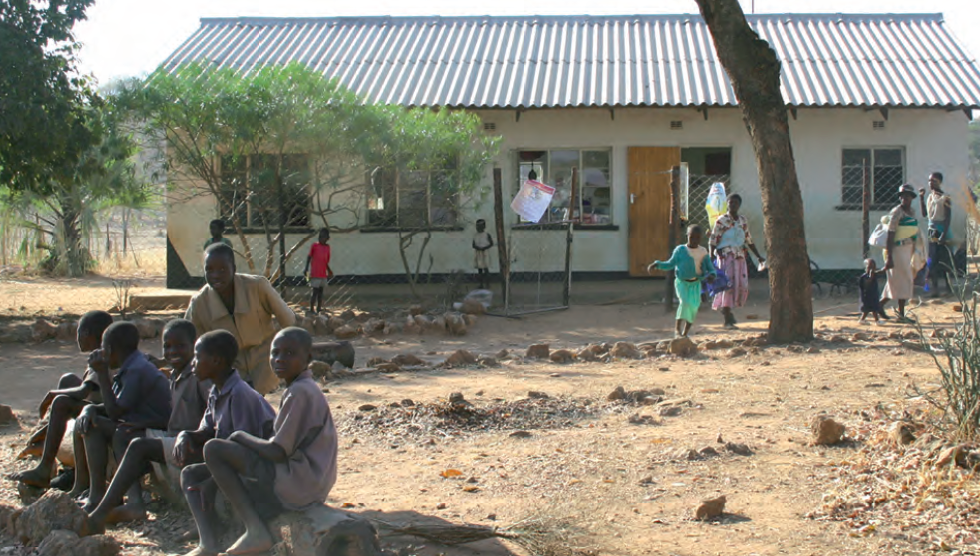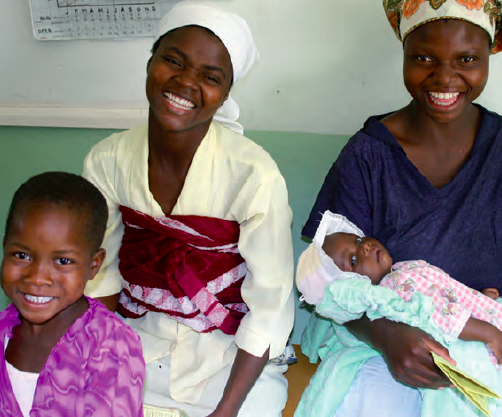The distribution systems and channels of RUTF, F100 and F75 for wasted children in Zimbabwe: A rural and urban perspective
 Vakai Makanganise Wisdom G. Dube
Vakai Makanganise Wisdom G. Dube
Vakai is the National Nutrition Logistics Officer in the Ministry of Health and Child Care (MoHCC).
Wisdom is a Nutrition Consultant supporting the MoHCC with the management of supplies and logistics for nutrition.
Introduction
Malnutrition remains a challenge in Zimbabwe. Levels of stunting (low height for age) are 32% (State of the World’s Children Report, 2015) and wasting (low weight for height) is 3%, 1% of which is severe (Global Nutrition Report, 2014). In 2008, the Ministry of Health and Child Care (MoHCC), in collaboration with UNICEF, introduced the Community Management of Acute Malnutrition (CMAM) approach to reduce mortality and morbidity associated with acute malnutrition. The CMAM approach aims to empower communities to mobilize, identify and treat uncomplicated cases of severe acute malnutrition (SAM) in the home with Ready to Use Therapeutic Food (RUTF) while complicated SAM cases are referred to inpatient facilities for treatment with therapeutic milk (F75 and F100). Children with moderate acute malnutrition are referred to a supplementary feeding programme and other available programmes to improve household food security. The MoHCC with support from UNICEF is responsible for providing nutrition products and training health staff in providing both inpatient and outpatient services.
In 2014, the MoHCC revised its CMAM programme to integrate the management of acute malnutrition with other services such as the Integrated Management of Childhood Illnesses (IMCI); this wider programme is now termed the Integrated Management of Acute Malnutrition (IMAM). To further integrate the programme into the existing health system, at the end of 2014, nutritional products (F75, F100 and RUTF) were included on the national drug supply list and are being delivered as part of the routine delivery of health supplies.
The IMAM programme, largely funded by UNICEF, has been operating in several districts since 2008. By 2012 the programme had reached a geographical coverage of 76% and treatment coverage of 38.2% (State of Global SAM Management Coverage, 2012). The performance of the programme has not been quantified as there is limited monitoring and evaluation in place due to a lack of capacity. However, there are plans to address this in 2015/2016. Repeated informal reports suggest that disruption in the supply of nutritional products is a significant challenge and is likely to effect programme effectiveness. A study was undertaken in response to these reports to identify ways to improve product supply and distribution and is outlined below.
Methods
The study was conducted in Harare and Marondera Districts representing examples of urban and rural IMAM programming areas. The survey area included ten clinics and two referral hospitals in Harare City Health (Municipality) and 19 clinics and one Provincial hospital in Marondera District.
A cross-sectional survey was conducted at randomly selected sites in both areas and included six health clinics in Harare and six health clinics in Marondera. Three questionnaires were designed for the following groups: 1) nurses, nutritionists and health personnel; 2) hospital store and logistics staff and 3) mothers of children admitted to the IMAM programme. Respondents were asked to rate different aspects of the current supply and distribution system of RUTF, F100 and F75 using a Likert scale (1=Very poor, 2=Poor, 3=Good, 4=Very good) and also included open-ended questions to obtain user perceptions of the current system and their suggestions for improvements. Questionnaires were tested for reliability and validity before being administered. Participants from each group were randomly selected and each gave informed consent to participate in the survey. Personal, unstructured interviews were also conducted with head office officials with experience of the supply and distribution system in UNICEF, WFP and the MoHCC. In total 120 interviews were administered across all sites (including questionnaire based interviews and unstructured interviews). Secondary data analysis was also conducted on documents from the MoHCC, UNICEF and WFP including records of stocks, complaints, RUTF consumption and lead times. Qualitative data was analysed manually and quantitative data was analysed using SPSS.
Results
Results showed that, whilst all health workers questioned in Harare (n = 11) were satisfied that transparency (integrity and honesty in the system) exists, some health workers in Marondera (2/5) felt that there was “no transparency”. Interviews with MoHCC staff revealed that they felt the supply and distribution of nutritional products to be inefficient within the ministry structure. Of the health workers and logistics and supply staff questioned in Harare clinics, none 0/11 declared losses and spoilage in the receiving, stocking and distribution of nutrition products, compared to 4/22 (22%) in Marondera clinics, which may imply that rural institutions are more susceptible to losses and spoilage compared to urban institutions.
Regarding shortages of RUTF, only 2/40 (5%) respondents in Harare declared that their clinic had supply shortages compared to 26/37 (70%) of staff in Marondera clinics. In Harare, 4.5% of mothers/ caregivers declared that they did not receive the necessary supply of RUTF due to shortages compared to 68.4% in Marondera. This reveals that shortages of nutritional products are more common in rural areas. All staff (nurses, nutritionists and dieticians) in both Harare and Marondera stated that RUTF, F100 and F75 are being given according to the new WHO guidelines. This was supported by interviews with staff of MOHCC and UN agencies. Staff at health clinics rated the effectiveness of distribution of nutritional supplements by the MoHCC and UN agencies more highly in Harare compared to Marondera (in Harare 8/11 rated distribution as “very good” and 3/11 as “good”; in Marondera all respondents, n=22, rated distribution as “good”). Results suggest that there is room for improvement in the distribution system in Marondera, and perhaps in rural areas more generally.
 Recommendations
Recommendations
Participants offered various recommendations for the improvement of the current supply-distribution chain of nutrition products, the integration of nutrition products into the national drug list and the IMAM programme in general. These include:
- Provide additional funding for RUTF. Current funding for RUTF (provided by UNICEF) compared with projected needs suggest there will be a funding gap in 2015.
- Increase national capacity in supply forecasting, supply management, and programme monitoring to promote better supply management.
- Increase stakeholder co-ordination, communication and collaboration to ensure efficient distribution systems for RUTF, F75 and F100 within existing health supply distribution systems.
- Restructure the supply delivery system to link to the existing electronic data processing system for all health supplies and nutrition products to address logistical challenges of supply management and distribution.
- Install storage facilities for nutrition products at all levels to improve distribution and reduce losses and spoilage of nutritional products.
Conclusions
The study suggests that the supply and distribution system in Harare has a high level of transparency with limited stock-outs. However, challenges exist in the supply and distribution of products in Marondera and potentially, in other rural settings. Recommendations have been made to improve the supply management and delivery of nutritional products in these areas; however, there is a strong need for advocacy to identify partners and raise funds to continue the IMAM programme. It is hoped that the additional monitoring and evaluation capacity in 2015 will help to standardise a system for routine monitoring and document the performance of the programme to facilitate advocacy efforts.

